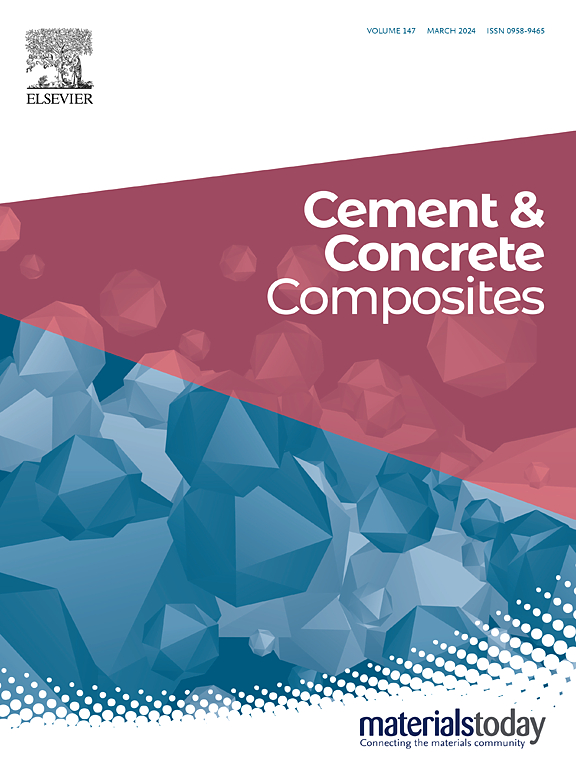Enhancing the reaction of municipal solid waste incineration (MSWI) bottom ash in blast furnace slag-based alkali-activated blends: A novel strategy and underlying mechanism
IF 10.8
1区 工程技术
Q1 CONSTRUCTION & BUILDING TECHNOLOGY
引用次数: 0
Abstract
Compared with blast furnace slag (BFS), the less reactive MSWI bottom ash (MBA) plays a minor role in alkali-activated blends. This research optimized the use of MBA as a precursor by enhancing its contribution to strength and microstructure development. The proposed strategy combines pre-treatment with pre-activation processes, enabling MBA to react before BFS addition. The NaOH-based pre-treatment led to the oxidation of metallic aluminum and the partial dissolution of the amorphous phase in MBA. The subsequent pre-activation resulted in the generation of C-A-S-H gel, which promoted later-stage gel formation in the paste. The reacted bottom ash particles exhibited distinct features in alkali-activated pastes. Compared with 100 % slag-based system, blending slag with MBA accelerated the slag reaction at late ages and facilitated the formation of a more polymerized C-(N-)A-S-H gel. The compressive strength results indicate that MBA is a promising alternative to Class F coal fly ash in BFS-based alkali-activated blends.
加强城市生活垃圾焚烧底灰在高炉渣基碱活化共混物中的反应:一种新的策略和机理
与高炉渣(BFS)相比,活性较低的MSWI底灰(MBA)在碱活化混合料中的作用较小。本研究通过提高其对强度和微观结构发展的贡献,优化了MBA作为前驱体的使用。所提出的策略结合了预处理和预活化过程,使MBA在添加BFS之前发生反应。naoh基预处理导致了金属铝的氧化和MBA中非晶相的部分溶解。随后的预活化导致C-A-S-H凝胶的生成,这促进了膏体中后期凝胶的形成。反应后的底灰颗粒在碱活化膏体中表现出明显的特征。与100%渣基体系相比,掺加MBA加速了后期渣反应,有利于形成聚合度更高的C-(N-) a - s - h凝胶。抗压强度试验结果表明,MBA是bfs基碱活化共混物中F级煤粉煤灰的理想替代品。
本文章由计算机程序翻译,如有差异,请以英文原文为准。
求助全文
约1分钟内获得全文
求助全文
来源期刊

Cement & concrete composites
工程技术-材料科学:复合
CiteScore
18.70
自引率
11.40%
发文量
459
审稿时长
65 days
期刊介绍:
Cement & concrete composites focuses on advancements in cement-concrete composite technology and the production, use, and performance of cement-based construction materials. It covers a wide range of materials, including fiber-reinforced composites, polymer composites, ferrocement, and those incorporating special aggregates or waste materials. Major themes include microstructure, material properties, testing, durability, mechanics, modeling, design, fabrication, and practical applications. The journal welcomes papers on structural behavior, field studies, repair and maintenance, serviceability, and sustainability. It aims to enhance understanding, provide a platform for unconventional materials, promote low-cost energy-saving materials, and bridge the gap between materials science, engineering, and construction. Special issues on emerging topics are also published to encourage collaboration between materials scientists, engineers, designers, and fabricators.
 求助内容:
求助内容: 应助结果提醒方式:
应助结果提醒方式:


